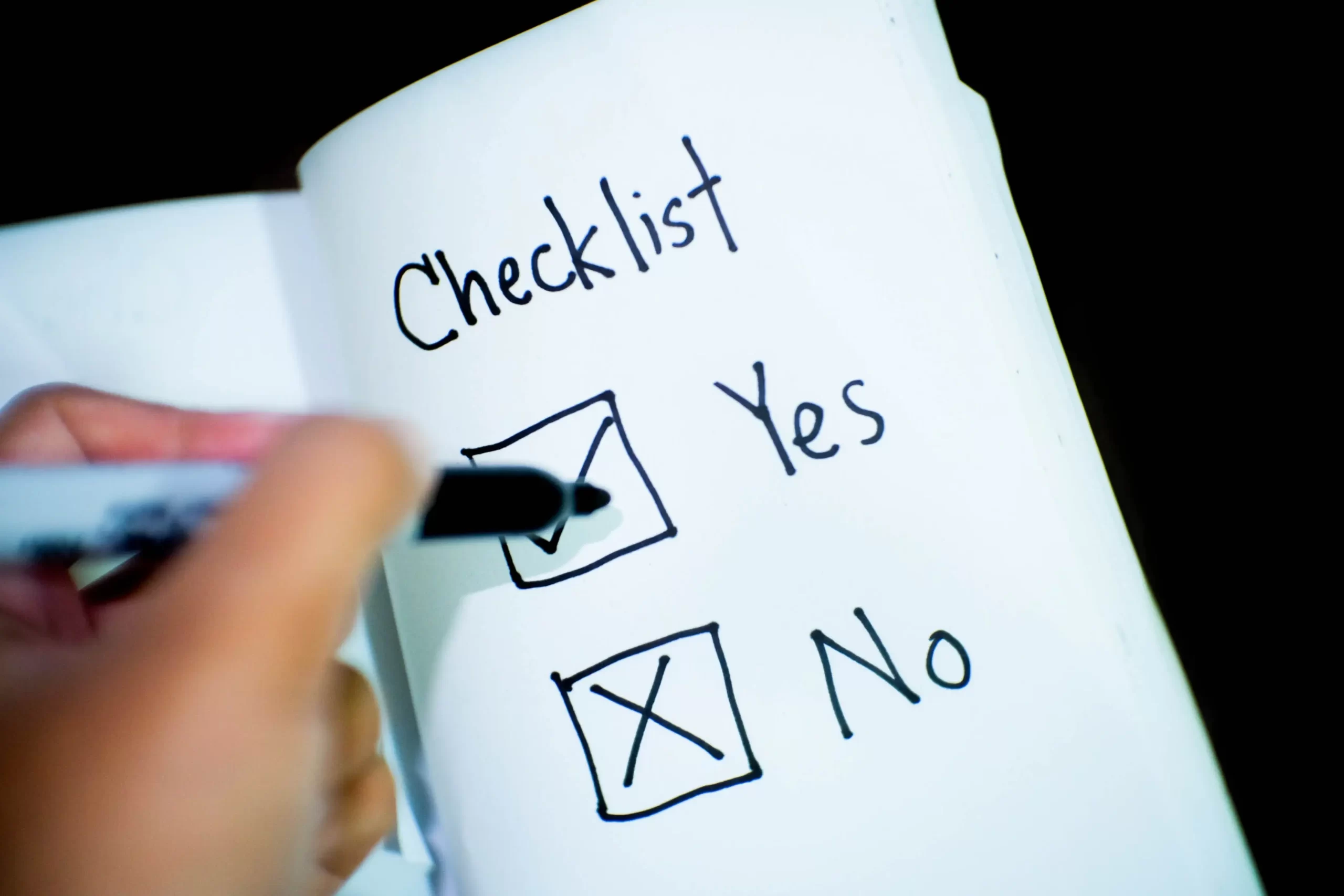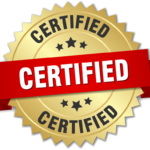Do you want to know the best checklist for creating a website? Are you unsure where to start?
Welcome to the world of easy website-building checklists!
Crafting a website has never been easy until you read this guide. Whether you’re starting an online business, or a lifestyle blogger, building a website is the first step. Websites are indeed complex, and so many things may overlook during the process. Even the most seasonal digital marketers or tech-savvy people struggle. What if you forget to set up site redirects, and those visitors get a “page not found message”? A handful of things can go wrong, leading to the loss of new leads.
However, people can build a website without hiccups with the right help and tools. Building your own website from scratch isn’t as daunting as you might think. Nowadays, even a novice can learn without any basic computer skills. You can make your webpage the very best you can. All someone needs is a good internet connection and a list of things that need to be reworked.
To get started, keep track of all the instructions you don’t want to miss. Here is a free checklist before, during, and after developing a website. Now, you can create your own website for blogging or create for business without tech experience.
Are you ready to create a website for free? Have fun along the way!
Before You Build
When you build a website, make sure everything runs smoothly before you push it live. Let’s find out three important tasks before building a new website checklist.
• List Our Goals And Responsibilities
The first move in creating a website is finding your purpose or niche. Identify your goals for the new design and why you are building a website. Whatever you want, understand if the new website will help you achieve that. When you know the purpose, such as blogging or promoting a business, it’s easier to measure success. List all categories like photography, business information, personal projects, blogging or podcasts, events and awareness purposes, etc. If your idea fits these categories, you can craft it accordingly.
• Decide How To Build
Since there are many ways to create a website for business, pick your way. You can use an open-source platform, hire a web designer, or choose a website builder. Hiring a web designer is good if you need a very advanced site. However, you won’t be able to run it yourself or manage it if anything goes wrong. You can also use open-source software like WordPress to start from scratch. You will need how to code and find a good hosting provider to get the most out of it.
In addition, choosing a website builder is both easier and quicker, especially if you don’t have tech skills. It’s all hosted along with a pre-filled template to edit. However, it’s hard to pick out the best and the good ones. Look for a free trial, mobile-friendly designs, help centers & support options, and SSL (Secure Sockets Layer) for safe use. Make sure the builder has the right features for your purpose.
• Test It Out
Before you commit to a paid plan, get halfway through the website build checklist. As you go, think if it’s easy to use, you can add new pages or edit your content and preview your changes. And choose a perfect price plan that fits your budget.
When Building A Website
Starting a website checklist requires a solid foundation to hit the ground running. If you’re ready to launch your website, make sure to go through these instructions.
Here is the ultimate checklist for creating a website.
- Pick up a website address that is easy to find and reflects your site. If you already have a domain, you can easily connect it with your new site.
- Browse the template section to make up the base for the site. Choose your color scheme and design a logo before you move.
- Set up an SSL certificate regardless of your niche. Otherwise, your website may be labeled as “not secure.” Ensure to enable HTTPS traffic to avoid getting your visitors a warning when they try to access it.
- Choose a solid CMS if you’ve never published a website. Using a CMS or Content Management System helps you to create, update and manage your posts and optimize your content for SEO. Please update it to the latest version regularly.
- Make SEO-optimized content for easily getting found in Google’s search results. Some basics of SEO content include keywords, page structure to ensure relevancy, meta description, and Alt text when uploading images, links, and good URLs. It is one of the necessary website requirements examples.
- Outline core pages for your website’s functionality and ensure they’re ready for the visitors. These pages may include a “Homepage” for vision, relevant CTAs, and a user-friendly guide, an “About Page” for any goals or brand’s values, a “Products/Services Page,” “Blog Page” for news, and trends, and “Contact Page.”
- Integrate analytics to your website for insights such as traffic, behavior, and demographic information.
- Prepare for 404s for a better user experience and test the broken links. Testing your site’s navigation and internal links avoids making a website look half-baked.
- Every page should have relevant and enticing calls to action or CTAs. Besides, consider having social media presence to direct users to your site.
- Proofread your content correctly for grammar and spelling mistakes. Make sure to keep the language simple and leave the jargon. Check for online grammar checking tools and be active, not passive. Your content must be reader-friendly so use consistent font sizes.
Other technical requirements for building a website are:
- Make sure your website is accessible, and your forms work
- Verify all URLs are correct
- Check if the website is optimized for mobile screens
- Test your site using different browsers
- Check for the website’s legal compliance
• How To Make A Relevant And Cohesive Website?
With the website review checklist described, your design needs to reflect your original strategy. Including Meta descriptions and title tags really help the search engines to determine whether your post is relevant. The font styles, layouts, format headers, colors, line spacing, and navigation must be consistent throughout.
Images and videos are other great ways to explain confusing topics and depict your vision. When uploading images, ensure they are optimized, labeled with alt text, and compressed for the web. Use high-quality and unique images with proper meanings. Moreover, make sure to purchase the proper license for the stock images.
Simply put, your formatting and images must be consistent with the rest of the site.
After Launching
Besides keeping your site safe from hackers, there are several things you need to go through. Your checklist for creating a website isn’t completed yet.
• Ensure The Backup Solution
Back up your site to restore your files by copying or downloading in the worst scenarios. Do it manually; use a third-party service or web host offering a backup solution by default. It is a pre-launch step but checking the implementation of this strategy is necessary after launching. Keep making copies regularly to avoid losing all your hard work.
• Verify Analytics Are Running Smoothly
Analyze good analytic results since your site has been live lately. Tracking data for the first months of launch is invaluable in measuring success. Double-check that funnels and goals are appropriately set, IP addresses are filtered out, and the Google search console is linked. Proceed with your decision based on how many people visit, click or scroll your pages.
• Ensure Your Load Time Is Acceptable
A checklist for creating a website requires running a site speed check to make sure the page’s loading time is acceptable. Make improvements if the speed rating is low. Moreover, make sure search engines receive your XML sitemap.
• Crawl Your Site For Any Errors
Make sure everything is done right and there are no errors in SEO strategy. Test your site for user experience (UX) to ensure visitors don’t bounce. Consider the proper working of all internal and external links, easy navigation, and the right conversion path.
• Promote Your New Website
Bringing organic traffic is the most essential checklist for creating a website. But how can you do it? In addition to SEO, there are several other ways of ranking your site. Paid advertising, email campaigns, and announcing on your social media channels can kick off your newly built website. Let your efforts make the noise!
Conclusion
From “why do I require a website” to launching your website, here is the pre-and post-launch checklist. You just walked through every step of the website checklist for a client. It will help you to streamline the process and see your site live on the internet. Building a website has never been so exciting. Go beyond setting up a few pages and writing the copy by playing with different tools and resources. Check the consistency of the site’s formatting, content, and layout. Crawl your site again and make sure you never skip a beat. At last, Keep going!




